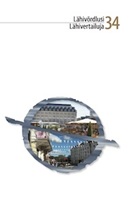Oppimateriaalin käyttö S2-luokkahuonevuorovaikutuksessa: korttien käsittelyn käytänteet osana toimijuuden ja yhteistoiminnan rakentamista kauppaharjoituksessa
Materials use in L2 classroom interaction: The practices of card handling in the construction of agency and joint action in a shop encounter task
Author(s): Katriina RantalaSubject(s): Foreign languages learning, Sociolinguistics, Finno-Ugrian studies
Published by: Eesti Rakenduslingvistika Ühing (ERÜ)
Keywords: conversation analysis; Finnish as a second language; language learning; embodiment; multimodality; materiality;
Summary/Abstract: As we are constantly surrounded by different objects and use them as resources for social interaction, different materials are also essential in classrooms. Learning and teaching materials often guide the classroom agenda, but they are also used as physical objects in interaction. In the language classroom context, learners can use materials to pursue their learning, for example, by initiating and formulating actions that are relevant to their learning process. This conversation analytic study investigates the use of learning materials in Finnish as L2 classroom interaction. The video data come from a sort of role-play, which simulates a shop encounter. In the task, adult beginner level learners play the roles of buyer and seller. The learning materials used are cards with pictures of products and their prices, which represent items to be bought. The study examines how the handling and transfer of the materials is distributed among the participants and how these practices demonstrate and enhance learners' agency. The results show that a 'buying turn', which identifies an item to be bought, is most often formulated and interpreted as a request. This practice distributes the agency between the participants: the buyer initiates the action but the seller executes or initiates the transfer of the card. The manipulation of the card is an interactional resource that makes the phase of the activity visible, confirms the possession of the card, and reinforces the roles in the task. Both participants orient to the manipulation of the material: The cards can be used, for example, to fill in vocabulary gaps without explicitly verbalizing the problem, which would interrupt and break the shopping scheme. There are also less typical cases in the data where the agency of one of the participants is more prominently displayed. For example, a buyer picks up cards with only minimal verbalisation, as in a self-service situation. In this case, the agency of a seller is not displayed, and the situation resembles typical authentic shop encounters in grocery stores. At the other extreme of agency distribution is a situation where a seller asks the buyer a question and postpones the transfer of the card until she gets the expected answer. In both cases, the transfer of the card and its timing play an important role in the course of action. Even if the other participant's agency is put on hold, these situations create different kinds of learning opportunities by authenticating the situation or extending the sequence and offering linguistic resources to help the recipient. The data suggest that the physical form of learning materials is not insignificant for interaction in the classroom: the possibility of manually manipulating concrete materials enhances the display of agency and intersubjectivity among learners. This is particularly true in this type of situation, where concrete materials would play an important role in authentic interactions. The use of tangible cards or even more authentic-like materials could be considered in different types of classroom activities.
Journal: Lähivőrdlusi. Lähivertailuja
- Issue Year: 2024
- Issue No: 34
- Page Range: 184-221
- Page Count: 37
- Language: Finnish

